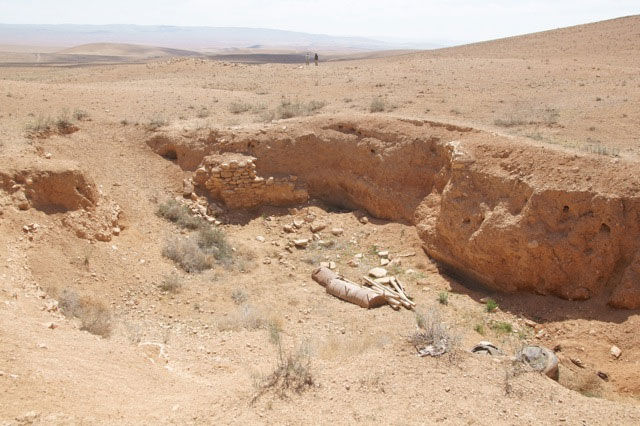Unravel the mysteries of the ancient city of Palmyra
In ancient Roman times, Palmyra was the most important city at the time, lying along the trade route connecting the east-west with a population of about 100,000 people. However, that is only part of the little information scientists have discovered about this mysterious civilization.
Why can residents here live well in the harsh conditions of the desert almost 2000 years ago? They get food from? The reason that such an important trade route chose to go through Palmyra? After four years of hard work, experts from Norway and Syria have found some answers, contributing to providing an understanding of the history of an ancient city that once disappeared.
Using modern archaeological methods, they approached the problem from a new perspective, focusing not only on examining and exploring the Palmyra region but also extending the scope to the north. With support from satellite imagery, Palmyra has been categorized as an ancient ruin visible on the surface of the Earth.

Ruins of reservoirs in ancient Palmyra city 2,000 years ago.
'In this way, we can build a full picture of what happened in the past' , explains Professor Jorgen Christian Meyer (University of Bergen).
Conducting the analysis, the team found that the area they were studying was not a desert, but an arid steppe with underground grasses holding rainwater underground. Rain from there flows back to the creeks and rivers that the Arabs call 'wadi' (oasis).
Occasionally a heavy rain poured down and each time, ancient Palmyra residents and many nearby villages stocked rainwater in dams and reservoirs for breeding and farming. ensuring food supply, stable food and disaster prevention can occur during drought.
In addition, Palmyra is also the place where the east-west trade route passes, along the Euphrates River in the north, providing many opportunities to enrich Palmyra people, explaining the city's prosperity. They joined the Arab immigrant team, building a comprehensive trading network that provides protection, transportation and guidance on how to cross the desert. Moreover, this place is not under the control of Romans in the west or Persians in the east.
Today, when people are trying to find cultivated land that can feed the population up to billions, we can learn and learn from the ancient Palmyra experience. If they can turn the desert into a cultivable land nearly 2000 years ago, why can't we have so many modern and modern facilities?
- Admire the most magnificent city ruins of ancient times
- The famous mystery in history has been solved
- 10 ancient cities have disappeared completely from the world map
- 10 legendary ancient legends to this day
- 2,000-year-old city trace in Egypt
- The ancient city suddenly
- Discovering the ancient city disappeared 2000 years ago
- Discovered the old city of 3400 years old in Israel
- Discover the mysteries of the ancient tomb of Maya
- Ancient cities thought only in legend
- Discover the ancient Mayan city in the forest
- 10 world famous ancient ruins
 The truth about the mysterious red-haired giant at Lovelock Cave
The truth about the mysterious red-haired giant at Lovelock Cave Inunaki Tunnel: The haunted road leading into Japan's 'village of death'
Inunaki Tunnel: The haunted road leading into Japan's 'village of death' The mystery of the phenomenon of human reflection before dying
The mystery of the phenomenon of human reflection before dying 6 mysterious phenomena, although science has been developed for a long time, still cannot be answered
6 mysterious phenomena, although science has been developed for a long time, still cannot be answered